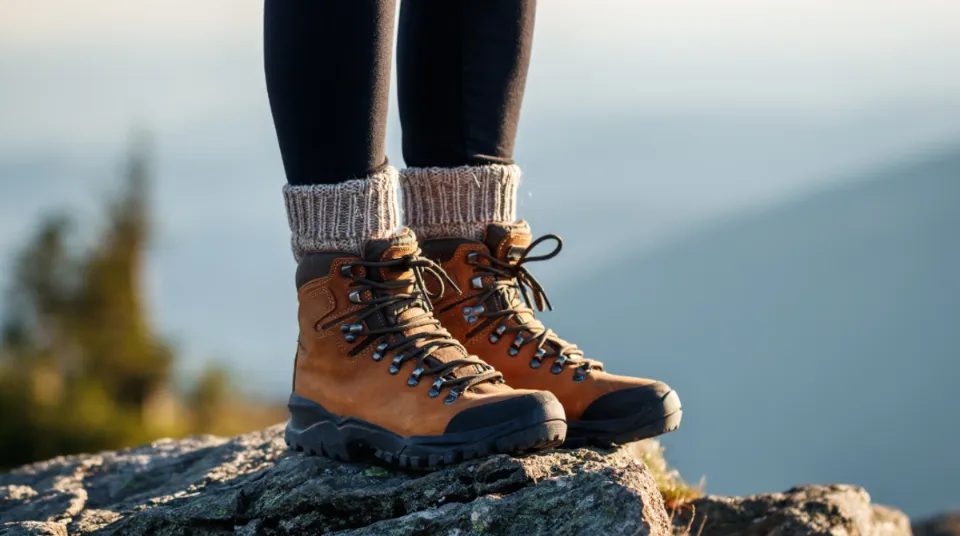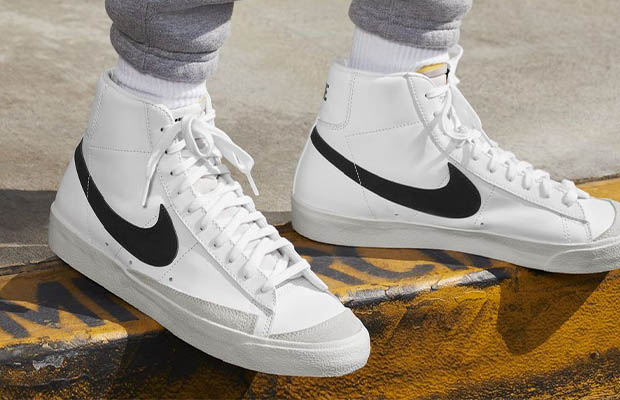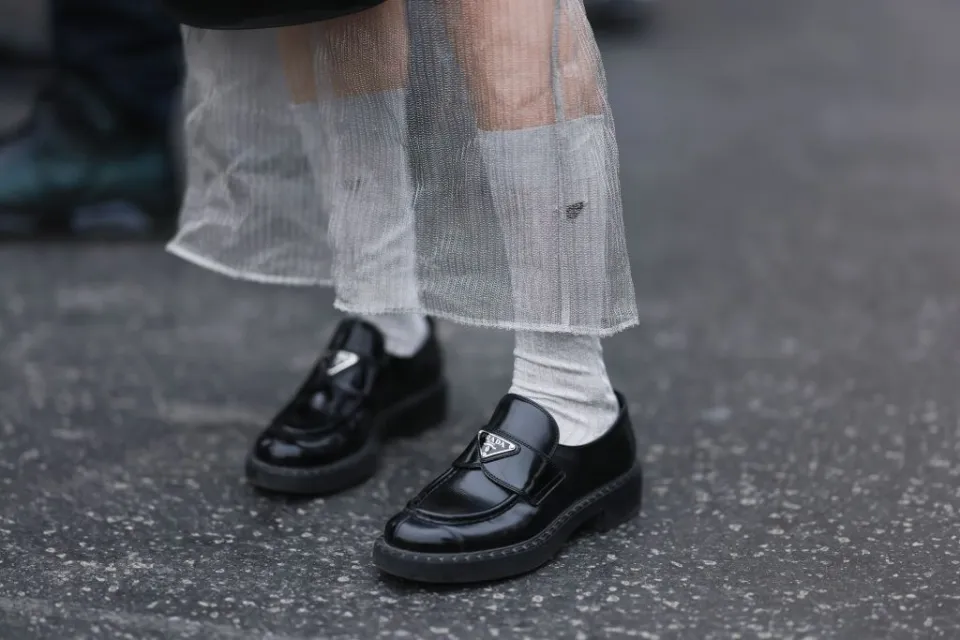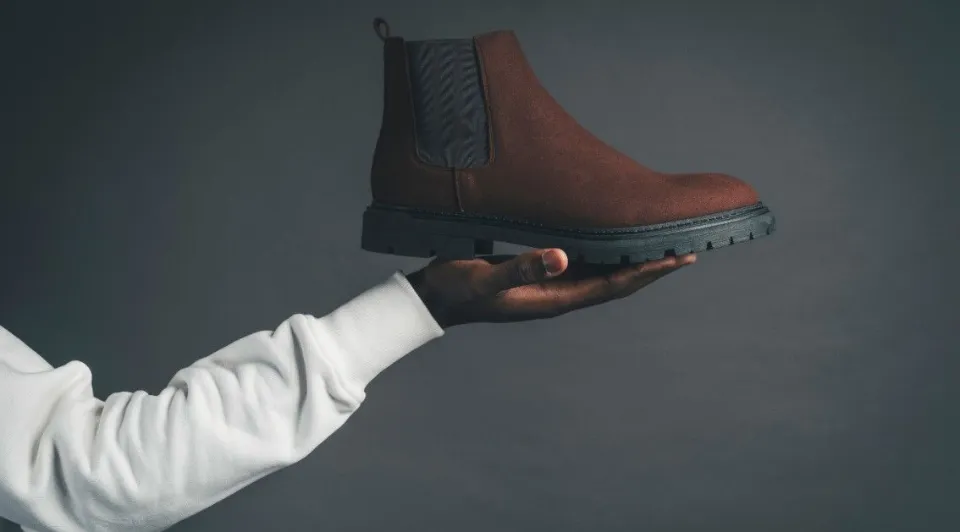Acquiring the appropriate equipment is crucial for hiking. And a decent pair of hiking boots is among the most essential items of equipment you’ll need. But how should hiking boots fit?
If your boots are too tight, you’ll be uncomfortable and your feet may become sore or even injured. On the other hand, if your boots are too loose, you’ll be at risk of blisters, foot fatigue, and even injury.
Learn more about choosing the right hiking boots by continuing to read.
How Should Hiking Boots Fit?
Fit is the single most important factor when you’re shopping for new hiking boots.
You want to make sure your feet are comfortable because they will be carrying your weight and your pack for every mile. Choose a couple of excellent hiking boots or trail shoes to try on first.
Your foot should feel secure in the shoe when you move your weight to the front of it. Your index finger should be able to slide easily between the back of the shoe and your heel. If not, your descents will result in bruised toes.
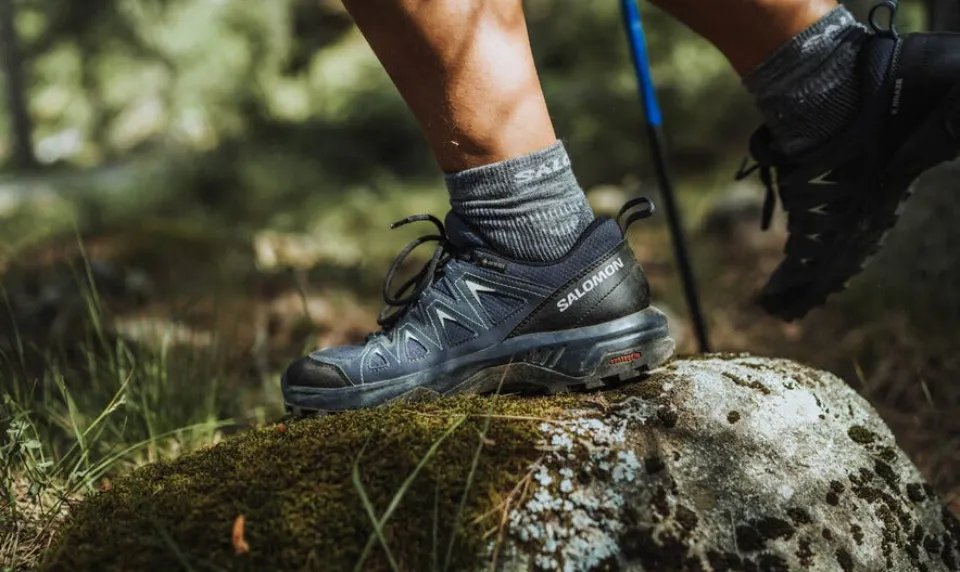
When the shoe or boot reaches the widest point of your forefoot, it should feel snug but not tight. Now, check the width. There shouldn’t be any pain on your ankle bones or pinching at the heel.
For the best hiking boot fit, follow these tips:
- Fit over features: A boot that fits great but has fewer features is always better than a poor-fitting boot with bells and whistles. With the right fit, your foot is held firmly without restriction or “hot spots,” which are areas where your shoe rubs against your foot and causes irritation.
- Time of day: Similar to what happens on the trail, feet swell throughout the day. When your feet are at their largest, try to buy hiking shoes later in the day.
- Shop in-person: It’s preferable to find the ideal fit in-store rather than online. To give you a better idea of how each boot will feel on the trail, a good retailer should have a rocky incline ramp.
- Take your time: Reputable boots are expensive, and once you wear them outside, you can’t get rid of them. While buying hiking boots, take your time.
- Do your research: Spend less time trying things on in-store if you do your homework online first.
- Home try-on: Before hitting the trails, spend some time inside wearing your new hiking boots. A great way to make sure you make the right decision before it’s too late.
- Add arch support: Even light hikers require more support than the generic factory insoles that come with their new boots. Investing in arch support inserts will help maintain the health and happiness of your feet as you log miles.
Different Types of Hiking Boots
Regarding hiking boots, there is an overwhelming variety to choose from. These are a few of the various kinds of hiking boots you might come across.
Full-Grain Leather Hiking Boots
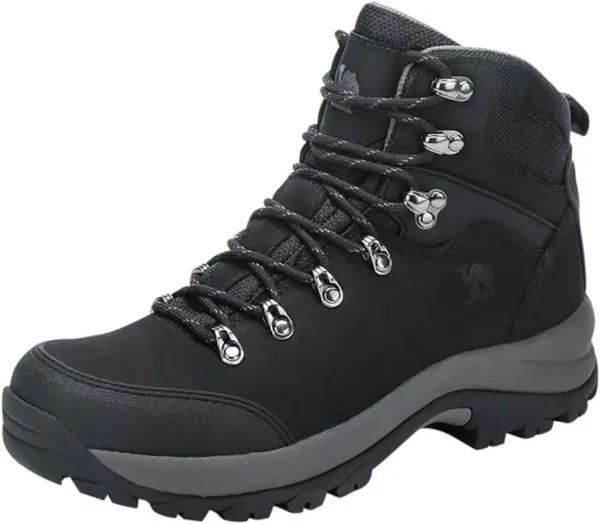
Resilient and impervious to water, full-grain leather can survive challenging circumstances. Heavy-duty hiking boots made for difficult terrain and protracted backpacking excursions frequently use it.
Though they provide superior support and protection, full-grain leather hiking boots are heavier and stiffer than other styles.
Split-Grain Leather Hiking Boots
To create split-grain leather, first split the full-grain leather and then remove the outermost layer. Compared to full-grain leather boots, this results in the boots being lighter and more breathable.
Nevertheless, compared to full-grain leather, split-grain leather is less resilient and water-resistant. For short backpacking trips and day hikes, split-grain leather boots are a good option.
Nubuck Leather Hiking Boots
Full-grain leather that has had its exterior sanded to produce a velvety texture is known as nubuck leather. Though they are still strong and water-resistant, nubuck leather boots are softer and more flexible than full-grain leather boots. For casual backpacking excursions and day hikes, nubuck leather boots are a great option.
Synthetic Hiking Boots
To make hiking boots lighter and more breathable than leather boots, synthetic materials like nylon and polyester are frequently used in their construction.
Also less expensive than leather boots are synthetic boots. Leather boots are more water-resistant and more durable than synthetic boots. For short hikes and day trips, synthetic boots are a good option.
Read More:
Common Hiking Foot Problems
During thru-hiking adventures, even the healthiest feet will suffer. Common foot complaints on the trail include:
- Blisters
- Sore Ankles
- Heel Pain
- Metatarsal Pain
- Swollen Feet or Toes
- Pinched Toes
- Flattened Arches
- Soreness in your legs, Achilles tendons, calves, knees, hips, and lower back
Incorporating some additional foot care tips into your hike will help you focus on the scenery rather than your feet, even though selecting the appropriate footwear and arch support will be helpful.
For your trip, bring along a minimum of two pairs of high-quality socks made of wool or polyester. Replace the pair you’re wearing as soon as they get wet. This lessens the likelihood of blisters, which are frequently brought on by friction and moisture.
Give your feet some time to rest, especially if they’re hot, tired, or sore. Take off your socks and shoes to allow your feet to breathe while you’re relaxing. Swelling in the feet can be lessened by elevating them.
Before lacing up your boots again, clean your feet with a damp washcloth, making sure to remove any dirt, pebbles, or debris.
Conclusion: How Should Hiking Boots Fit
In conclusion, finding the right fit for your hiking boots is crucial for a comfortable and enjoyable hiking experience.
If this post was helpful to you, please let me know in the comments below. If you have any tips or tricks for getting the perfect fit for hiking boots, please share them.
We appreciate your interest in Hiking Feet. And Happy hiking!
FAQs
Should Hiking Boots Be Loose Or Tight?
Your hiking boots should fit snugly but not tightly around your heel and the sides of your foot.
How to Tell If Hiking Boots Are Too Big?
When wearing them, it’s obvious if you can’t flex your foot correctly at the breakpoint, which is the widest part of your foot.
How Much Room Should You Have in a Hiking Boot?
The distance between the tip of your boots and your big toe should be at least one inch.

